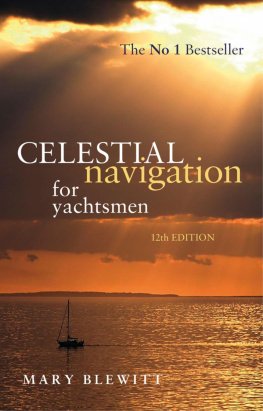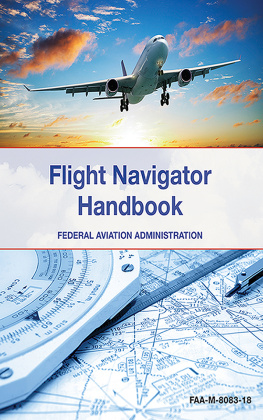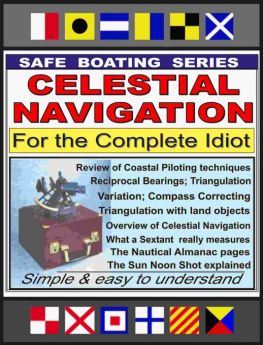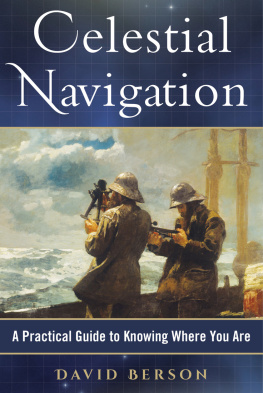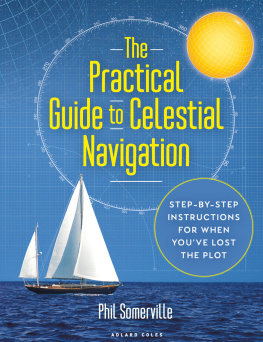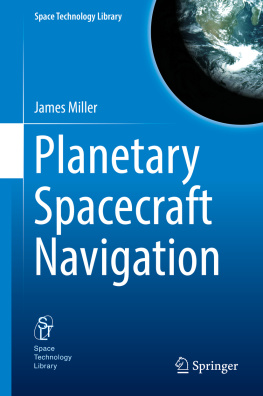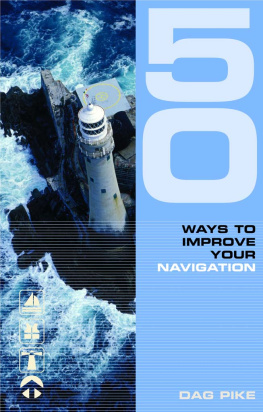
Forewords
I am glad to be able to contribute a short foreword to this book because, having studied the text, I am sure that it will satisfy the very real need for an up-to-date work based on the use of the simplified tables and written entirely from the yachtsmans, as opposed to the airmans or ship navigators, point of view.
Rigorous exclusion of unnecessary material from the text has, in my view, added to the value of the book and made it easier to attain that most desirable thingcorrect emphasis on the various aspects of the subject. The result is lucid and practical, but there is just sufficient theoretical explanation included to inculcate the knowledge that is necessary as a basis for this subject.

By the late Captain (E) J. H. Illingworth, R.N.
When Mary Blewitt wrote her admirably concise guide to the principles and practice of astro-navigation at sea, shortly after the war, methods of sight reduction had already become greatly simplified by the introduction of direct-entry (Alt./Az) tables and the GHA almanac. She was at that time a successful navigator in ocean races, in such famous craft as Bloodhound and Myth of Malham; and her severely practical aim was to provide the yachtsman with sufficient information to make the best possible use of his sextant, timepiece and tables. The book has stood the test of time and, through successive revisions and changes in navigational practice, continues to give sound advice on the whole matter of sights at sea. It has now in effect become a standard work.
The author, as Mary Pera, was later to become Secretary of the Royal Ocean Racing Club and, in due course, Chairman of the Racing Rules Committee of the Royal Yachting Association. Her contributions to navigation have been many, but none has perhaps been more abiding than this seamanlike little volume.

By M. W. Richey, former Director of The Royal Institute of Navigation
Preface
Since the first edition of this book in 1950 very large changes have taken place in the yachting scene, and even larger ones in the field of navigation. In the past, to circumnavigate the world without astro would have been a dangerous hit-or-miss performance. Today, yachts race round the world and across oceans with batteries of computers supplying positions from GPS and other navigational aids without any apparent need for astro. This is fine, provided of course, and it is a very important proviso, that the instruments function correctly and that the batteries stay in a condition to operate the electronic equipment. To say that ocean voyaging is safer with the new instruments is a truism, but just as a driver needs contingency plans for when he has a flat tyre, so a navigator needs a fall-back when his instruments let him down. Offshore, that fall-back must be astro. When the crisis occurs, this book will help lighten the darkness of the navigator struggling with almanac and tables, perhaps for the very first time.
There used to be a tendency among navigators to parade celestial navigation as a black art, too difficult for the ordinary chap to understand, but those days are long gone and with the arrival of computers the new generations are less frightened of figures than their forebears. I have written for beginners or for those who have forgotten all they knew and I have presumed them to be as ignorant and confused as I was when I began. However, since, in fact, the reader need only add and subtract, he will not find the subject too complicated. As with all navigation, the most difficult part is judging the accuracy of the information obtained, and assessing the weight that can be put on it. If the navigator does not know whether his position line (however obtained) is one mile out or twenty, it is as if he had never taken a sight. The readers real work will begin after he has absorbed this book and begins to observe often enough to form his own opinion of the value of his sights. It must be fun, in these days of GPS, to have a competition on board as to who can take the most accurate sight, and of course work it out. Now that checking the accuracy of sights is easy there should be more incentive to practice.
To avoid unnecessary detail, some of the statements are slightly inaccurate. For instance, I say that one nautical mile equals one minute of arc on the Earths surface: this is not strictly true, for the measurement varies at the poles and the equator, but the difference is never apparent in practical navigation. For simplicity, I have left out any mention of such technicalities as the celestial equator or the celestial horizon. The reader who wishes to study the subject more thoroughly must turn to the Admiralty Manual of Navigation or similar publications
The Nautical Almanac and the Air Tables (AP3270) are used for the examples because they are the simplest and least specialised. Mixing marine and air systems brings some inevitable inconsistencies, but nothing that need trouble the yachtsman. As an added bonus, the Nautical Almanac now carries concise tables which allow it to be used alone, although I should not advise this to begin with. Another almanac, published by Adlard Coles Nautical, also contains in one volume all the necessary ephemeral data together with its own sight reduction system; this is Reeds Astro Navigation Tables compiled by Cdr Harry Baker.
Few amateurs can hope to reach the standard of a professional navigator or should I say old-time professional navigator? Regular daily observations over the years ensured confidence and accuracy; but this does not mean that you will not be able to take adequately competent sights, even in rough seas, and I can assure you that a sense of triumph when a sight proves correct is well worth the effort involved. It is the first step that is difficult; take one sight and you will be bewildered, take two and the fog begins to clear, take a dozen and you will wonder what all the fuss was about. I hope that the explanations in this book are clear enough to encourage you to go and take a sight with a good idea of what you are trying to do and modicum of confidence that you will be able to do it.
Mary Blewitt
1997
KEY TO THE DIAGRAMS
The key applies to all the diagrams in this book.
P, P' | North and South Poles |
E, E' | Equator |
H, H' | Horizon |
Q | Centre of the Earth |
X | Geographical position of the heavenly body under discussion |
Z | The observer, or the azimuth angle at the observer |
Z' | Observers zenith |
G | Any point on the Greenwich meridian |
From the foregoing it follows that
The line PZ is part of the observers meridian.
The line PX is part of the meridian of the geographical position of the heavenly body under discussion.
The line PG is part of the Greenwich meridian.
Except where further description is necessary these letters are not explained again in the book.
ABBREVIATIONS
Next page
